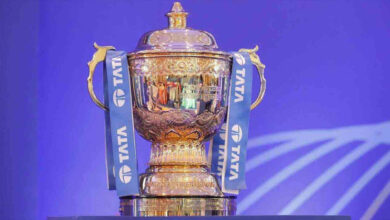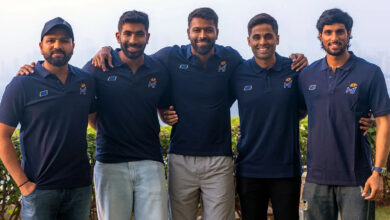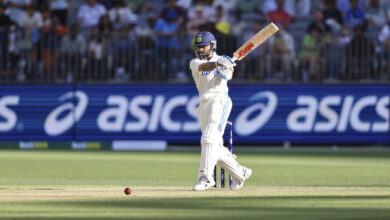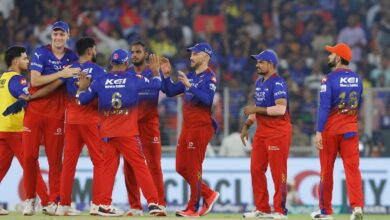How India came to dominate the chessboard | Chess News
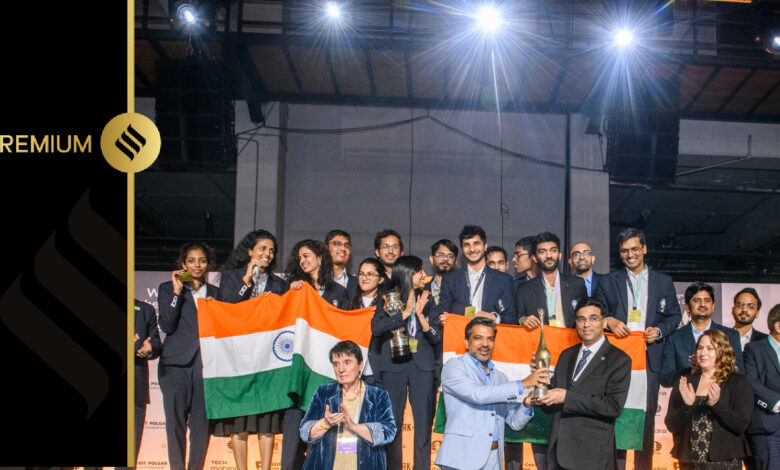
At the felicitation function for the Indian chess contingent, back from the Budapest Olympiad with four individual golds and the team golds, grandmaster Abhijit Kunte had an anecdote to share from his first Olympiad. The year was 1998, and the scene was set in Ela, a city in Russia’s Kalmykia republic.“Garry Kasparov was playing in the Ela Olympiad. We used to go before the games started to take his autograph. Kasparov would give autographs only on chess books written him,” recounts Kunte. “This time, when I went to the Olympiad in Budapest, I saw children running for autographs of our Indian players. We are no more seeking autographs, we are giving them,” said Kunte, captain of the women’s team.
Over the course of a heady fortnight in Budapest, the axis of the world of chess had tilted decisively — towards India.
At this year’s Chess Olympiad in the Hungarian capital, the Indian chess contingent swept the three team gold medals on offer — the ‘Hamilton-Russell Cup’ for the open section, the ‘Vera Menchik Cup’ for the women’s section and the ‘Nona Gaprindashvili Trophy’ for the overall title. To add to those three team golds, there were also four individual golds won Gukesh, Arjun Erigaisi, Divya Deshmukh and Vantika Agrawal.
The Indian team in the open section of the Olympiad — a biennial team event where over 180 nations participated — was so dominant that it finished four points ahead of five other teams who ended second, the United States of America, Uzbekan, China, Serbia and Armenia. At the last Olympiad in Chennai in 2022, the Indian chess contingent came close to winning two gold medals, but stumbled at the final hurdle. But this time, there was no stopping the Indians.
“If this success had come in the Chennai Olympiad two years ago, it would have had the sense of a slight accident. A pleasant surprise. At the Budapest Olympiad, very quickly, the fourth round itself, I had the feeling, ‘which team is going to stop them?’ And we know the answer. They won a four-point gap,” five-time world championViswanathan Anand said at an event in Mumbai.
On the live world rankings, which are updated in real-time, there are currently three Indians in the top 10 — Gukesh, Arjun and Anand — with Praggnanandhaa just outside. Three Indian men and two women also qualified for the Candidates tournament in April. Held in Toronto this year, the tournament – which accommodates only eight players in each category and is held to find a challenger to the world champion — saw 17-year-old Gukesh becoming the youngest player to qualify for the World Championship.
After Gukesh won the Candidates, the legendary Garry Kasparov had remarked: “The Indian earthquake in Toronto is the culmination of the shifting tectonic plates in the chess world… The children of Vishy Anand are on the loose.”
“You can have a lot of trophies but the Olympiad gold is special. It establishes your dominance as a team and as a country,” Indian team captain Srinath Narayanan told The Indian Express.
With Budapest under its belt, India had cemented its place as a bona fide chess superpower.
Grandmasters showed the way
India’s chess story has an arc that begins with Viswanathan Anand, the country’s first GM, and leapfrogs to the present generation of prodigies. But between Anand and the current generation is a lesser-told story: of an in-between generation of grandmasters — R B Ramesh, Srinath Narayanan, Vishnu Prasanna, Abhijit Kunte, Surya Shekhar Ganguly and Sandipan Chandan, to name a few — who turned to coaching early on in their careers and sculpted this young bunch of Indian world-beaters. They did that catching them early and giving them a blueprint to aim for the top.
Vishnu Prasanna became a GM in 2013, the same year as Vidit Gujrathi, but just four years later, went on to become one of Gukesh’s earliest coaches. Srinath Narayanan became a GM four years after Vishnu and Vidit, but was one of the strongest influences in shaping the careers of Arjun and Nihal Sarin. Among the many players R B Ramesh has worked on in their early days are Pragg and Vaishali.
“Some of the things I taught these players was what I learnt through trial and error after several years. We were able to save many years for the next generation of players… For instance, one of the old dogmas was that you shouldn’t play too much blitz (the fastest format of the sport) because it’s harmful for your chess. But look at Arjun and Nihal. They grew up playing blitz online. In today’s times, it has become one of the most effective ways of improving chess for any player, not just super talents. If you play blitz against players stronger than you, you stretch yourself. In the process of stretching yourself, you improve,” Srinath Narayanan, who was in Budapest as India’s captain, told The Indian Express.
In Gukesh’s case, it was Vishnu who gave him a key advice that would prove to be a gamechanger. Vishnu told him to not use chess engines till he crossed a certain rating barrier. It was a counter-intuitive gambit given engines have altered the way players now prepare for games. But the plan worked and Gukesh nearly became the youngest grandmaster in hory.
R B Ramesh jumped full-time into coaching at 32, after being a part-time coach for nearly 10 years. “When we were players, we did not know if some of the decisions we were taking were good or bad. There was no one to seek guidance from. You just had to trust your instincts. For these youngsters, it helps to have someone who has gone through these things themselves.”
Of course, for India’s prodigies, the last mile in the knowledge gap was bridged the nation’s first grandmaster, Anand.
At the height of the pandemic, Anand launched the Westbridge Anand Chess Academy (WACA), an online platform modelled on the legendary Botvinnik School of Chess in the erstwhile Soviet Union.
As part of WACA, Anand handpicked the country’s prodigies — Gukesh, Pragg, Vaishali and Arjun — and helped them get coaching from trainers he himself had worked with during his playing days. At WACA, Polish GM Grzegorz Gajewski taught opening theories, Sandipan Chanda helped them touch up their mid-game prep, Russian GM Artur Yusupov taught endgames and Boris Gelfand hosted mentoring sessions.
Anand also ensured the players had the best personal attention. His input was essential for Gukesh hiring Polish GM Grzegorz Gajewski as his trainer because Anand thought the teenager needed to sharpen his openings. Anand also nudged Vaishali to hire Sandipan Chanda as her trainer. While Gukesh is now going to contend for the World Championship, Vaishali became India’s third woman grandmaster.
India’s Gukesh poses with his individual gold medal on board 1 in the open section at the Chess Olympiad in Budapest. (PHOTO: FIDE/ Michal Walusza)
Big moves, big money
At the Chess Olympiad, backed the government, India took a big contingent to Budapest with their 10 players supported a six-member backroom staff of grandmasters. The delegation included captains Srinath Narayanan and Abhijit Kunte and assant coaches Vaibhav Suri, Sankalp Gupta, Swayams Mishra and Arjun Kalyan. India’s second grandmaster Diendu Barua was also sent as the head of the delegation.
The size of the delegation drew admiring looks from other grandmasters around the world.
“Here at the Olympiad, the Indian team is here with more coaches than players. And then there are other teams who are themselves, preparing. They have to pay for their own flights to get here,” Hungarian grandmaster Richard Rapport told The Indian Express.
India’s winning run in chess has coincided with government support and financial viability of the sport – key factors behind the sport’s rising popularity among youngsters who see the sport as a career option.
There’s big money to be made in the sport, whether from playing for a league like the Global Chess League or playing in individual events. Gukesh won €48,000 (approximately Rs 45 lakh) for winning the Candidates this year. Besides the prize money at these big-ticket events, there are open tournaments and online events where there is more money to be made.
“There was a time when incomes depended on the top tournaments that we played. But now, the current crop of Indian youngsters have massive sponsorships. They no longer care about the money they make from tournaments. So they sometimes play for very little money at open tournaments,” says Dutch grandmaster Anish Giri.
Giri is pointing at the jaw-dropping sponsorship deals that India’s top players have signed in recent years. Pragg is backed the Adani Group for an unspecified amount while Arjun signed a Rs 12.4 crore ($1.5 million) deal for five years in 2022.
The Indian team poses on the podium at the Chess Olympiad in Budapest. (PHOTO: FIDE/ Michal Walusza)
Chess mates, all
While the world feverishly watched the Indians bulldoze their way past opponents in Budapest, away from the cameras, the Indian players bonded over more than just the game.
Srinath, the team captain, reveals how Arjun would order food for Vidit whenever his games stretched on for late because the latter ate only vegan fare and the buffet usually had limited vegan options.
“We used to have team walks together. And extremely long dinners where we would just crack jokes and roast each other. It’s mostly Hari anna (Harikrishna) and Vidit who pulled our legs. We had decided before the tournament that we wouldn’t talk about negative things because we didn’t want that to spread in the team,” says Arjun.
After the team won gold, all the players gathered in a hotel room and sat around a bed singing, with Vidit on theguitar.
These group sessions are a rare privilege that only the Olympiad offers considering chess players usually live very isolated lives while on the tour.
“Indian prodigies like Arjun and Gukesh have risen together. They have just accepted the fact that they have to focus on their game…They are just so successful on their own that I don’t think they compete with each other. They compete with themselves,” says Anish Giri.
The closing ceremony of the Olympiad in Budapest offered a window into that camaraderie and mutual respect that India’s best players shared in a sport that’s otherwise a largely individualic pursuit.
That day, as Praggnanandhaa stood on the stage with the winner’s trophy, about to pose for a photograph, Vidit Gujrathi, one of the elder statesmen of the side, slipped in from behind, draped a tricolour over the young Pragg’s shoulders and slipped out of the frame.
And then, there was Gukesh. For most of the year, he has worn his game face, but after the Olympiad win, coaxed seniors Tania Sachdev and Vidit, he danced and did the Rohit Sharma-Messi slow-mo walk to the podium. After Anand handed the team the winners’ trophy, Gukesh, Arjun and Vidit engaged in a conspiratorial whisper before handing the trophy to Anand and nudging the India legend to hold it aloft.
That was the day chess borrowed a bit of cricket’s flamboyance – after the 2011 World Cup, the Indian cricket team had hoed Sachin Tendulkar on their shoulders as they did a victory lap at the Wankhede Stadium. Anand later said, “That moment felt nice.”
Meet India’s individual gold winners at the Chess Olympiad
The Chess Olympiad saw some impressive solo performances from the Indian contingent with four players — Gukesh (board 1 in open section), Arjun Erigaisi (board 3 in open section), Divya Deshmukh (board 3 in women’s section) and Vantika Agrawal (board 4 in women’s section) — winning individual golds as well.
Gukesh: With eight wins in 10 games, he is now World No. 5 in real-time live rankings. His ratings rose 30 points to 2,794 in just 10 games.
Arjun Erigaisi: Started the Olympiad with a rating of 2,778, but is now three points away from breaking into the exclusive 2,800 club. He added 19 points to his tally at Budapest and is now World No. 3 in the live rankings.
Divya Deshmukh: Was one of India’s stars in the women’s section at the Olympiad. She added 17 points to her tally and is now the World No. 11.
Vantika Agrawal: The surprise package for India at the Olympiad, she played nine games, winning six and drawing three. Her big wins were against Georgian grandmaster Bella Khotenashvili and American GM Irina Krush, both coming with black pieces.



